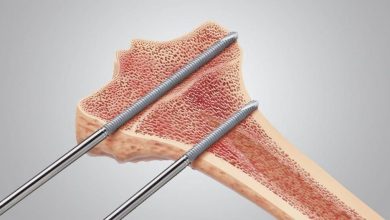Turbinado sugar: nutritional information, benefits and uses

Its color is light yellow or light golden brown. The name “turbinado” comes from the word “turbine” and refers to the method they use to process it.
If you don’t know it by turbinado sugar, you may have heard of demerara or raw cane sugar. Here we will explain more about this type of sweetener, the possible benefits it provides for health, and how it can be used.
What is turbinado sugar?
Turbinado sugar is made from sugar cane and is partially refined, retaining some of the original molasses, which gives it its caramel color. It is usually thought that it is raw sugar, due to the little refinement that its obtaining entails. But the Food and Drug Administration ( FDA ) ensures that it is not completely raw.
Sugar without total refinement is not safe for human consumption, as it may contain impurities. Although the turbinado does have a cleaning process, it is not as exhaustive as the one that is applied in the common one.
How is it obtained?
The process for obtaining turbinado sugar is almost the same as for other types of sugar, except for the last part. In principle, they wash and chop the cane or beetroot.
Subsequently, the sweet juice containing large amounts of sucrose, the main compound, is extracted. However, that juice also contains impurities, which are removed in the filtering process. This prevents the growth of bacteria.
The next step is dissolution, which occurs when water is united with sucrose. This water evaporates when the cane or beet juice is boiled until it reaches a saturated solution that thickens the product. At this point, the sucrose begins to form crystals with a subtle brown color.
When turbinado sugar is prepared, a small part of the sucrose does not crystallize due to its water content and impurities and caramelizes until it becomes slightly bitter. That is molasses with a slight caramel flavor.
So, if you want to obtain refined white sugar, molasses is eliminated. With the turbinado, it is not like that. The molasses is partially left and, depending on the amount it has, it is considered brown, turbinado, demerara or mascara do sugar.
The brown version, for example, is another variant that depends on the amount of molasses that remains in the final product.
Turbinado sugar nutritional information
Turbinado sugar provides certain minerals. We tell you more about it in a calculation based on 1 teaspoon, which is equivalent to 5 grams of sugar:
- Calories: 18.
- Fat: 0 grams.
- Sodium: 0.1 milligrams.
- Carbohydrates: 4.6 grams.
- Fiber: 0 grams.
- Sugars: 4.6 grams.
- Protein: 0 grams.
- Calcium: 0.55 milligrams.
- Potassium: 1.33 milligrams.
- Magnesium: 0.01 milligrams.
- Iron: 0.017 milligrams.
Despite having some minerals, such as calcium, potassium, and iron, their values are not relevant in the diet. However, the caloric value is as high as that of refined sugar.
Additionally, there are studies that claim that molasses byproducts, including turbinado sugar, can provide antioxidants left over from processing. Although they are also very few compared to other foods.
Turbinado sugar benefits
Turbinado sugar has several health benefits. Although the warning must always be made: it is still sugar. Its consumption should be monitored.
Has more nutrients than regular sugar
If compared to the nutrients provided by common refined sugar, turbinado provides more minerals (calcium, magnesium, and potassium). While refined sugar only provides calories, but has no minerals.
However, a lot of sugar would have to be consumed to cover the intake requirements of these micronutrients. And this is not healthy.
Contains more antioxidants
Turbinado sugar, refined sugar, and brown sugar were compared in a scientific study. The objective was to investigate the antioxidant capacity of the products, as well as their toxicity.
Turbinado sugar was shown to be better than the other two sugars because its moisture content was lower and its ash content was higher. As well as its concentration in minerals.
It was also revealed that the main antioxidant compounds of this sugar are 4‐hydroxybenzoic acid, chlorogenic acid, protocatechuic acid, transfer‐ferulic acid, and apigenin. On the other hand, no toxicity was identified.
It has a lower glycemic index than other sugars
The glycemic index (GI) is an indicator of how quickly a food can increase blood sugar levels. That is, how the body responds to carbohydrate food.
The GI is measured between 0 and 100. The faster carbohydrates break down and increase blood sugar, the higher the glycemic index. So, the closer to 100, the more glycemic index a food has.
Although still high, turbinado sugar has a glycemic index of 75, while refined sugar has a glycemic index of 80 and high fructose corn syrup has a glycemic index of 87. There are other sweeteners, such as stevia, agave, and fructose, which also have a lower GI.
The indication or not of this sugar, for certain diseases, must be authorized by a health professional. For example, in diabetes, low GI foods are required, so turbinado sugar would not be part of the menu.
The lower glycemic index does not enable this product to be part of the diet of patients with diabetes or metabolic syndrome.
Contraindications

The reality is that, to reach the amount of vitamins and minerals that the body needs, using only turbinado sugar, one would have to eat more than is recommended. Remember that the amount of sugar indicated for men is a maximum of 9 teaspoons; for women, a maximum of 6.




